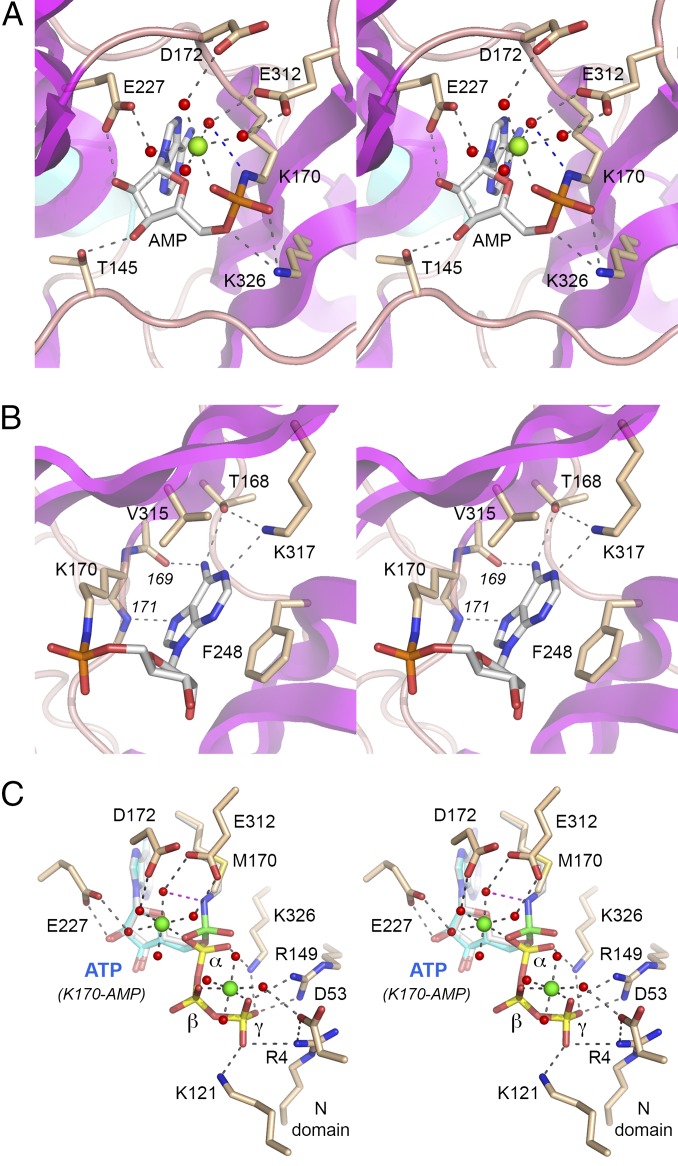Fig. 3.
Structural insights to the mechanism of lysine adenylylation. (A and B) Stereo views of the active site of the NgrRnl-(lysyl)–AMP•Mn2+ intermediate in different orientations highlighting the Mn2+ coordination complex and enzymic contacts to the AMP ribose and phosphate (A) and contacts to the adenine nucleobase (B). Amino acids and AMP are shown as stick models with beige and gray carbons, respectively. A single Mn2+ ion and associated waters are depicted as green and red spheres, respectively. Atomic contacts are indicated by dashed lines. (C) Stereoview of the active site of the NgrRnl-K170M•ATP•(Mn2+)2 Michaelis complex. Amino acids and ATP are shown as stick models with beige and blue carbons, respectively; the ATP phosphorus atoms are colored yellow. Two Mn2+ ions and associated waters are depicted as green and red spheres, respectively. Atomic contacts are indicated by dashed lines. The superimposed lysyl–AMP adduct from the covalent intermediate structure is shown with gray carbons and a green α phosphorus atom (to highlight the stereochemical inversion of the phosphorus center after lysine adenylylation).

